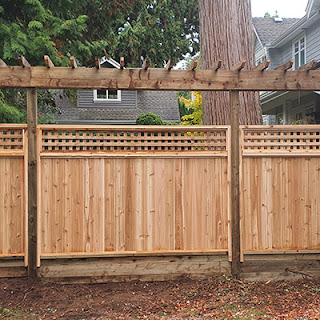The Ultimate Guide to Wooden Fence Installation
Installing a wooden fence is not just about enhancing the privacy and security of your property; it's also a valuable addition that can significantly increase the aesthetic appeal and overall value of your home. In this detailed guide, we delve into every aspect of Wooden fence installation, providing you with expert advice to ensure that your fence is both durable and beautifully integrated into your landscape.
Choosing the Right Wood for Your Fence
The choice of wood is crucial in determining the longevity and appearance of your fence. Among the most popular are cedar, redwood, and pressure-treated pine. Cedar and redwood are prized for their natural resistance to weathering, decay, and pests. Pressure-treated pine, while more economical, is treated to resist rot and insects, making it a sturdy choice for areas prone to adverse weather conditions.
Design and Planning
Before installation begins, proper design and planning are essential. Consider the purpose of your fence. Is it for privacy, aesthetics, or security? The function will dictate the style of the fence, from a simple picket fence to a full privacy fence. You should also check local zoning laws and homeowners association regulations to ensure compliance with height and placement guidelines.
Tools and Materials Needed
Having the right tools and materials is vital for a successful installation. Here’s what you’ll typically need:
- Measuring tape and level: For precise measurement and alignment.
- Post hole digger or auger: For creating holes for the fence posts.
- Hammer and nails/screws: Depending on the type of fence, you might use nails or screws for assembly.
- Saw: To cut the wood to required lengths.
- Stain or sealant: To protect the wood from the elements.
Installation Steps
Mark the Fence Layout Begin by marking the ground where the fence will be installed. Use stakes and string to delineate the line where the fence will run, ensuring it is straight and even.
Dig the Post Holes Using a post hole digger or an auger, dig holes approximately two feet deep and wide enough to accommodate about one-third of the post height, which should be below the frost line to prevent shifting during freeze-thaw cycles.
Set the Posts Place the posts in the holes and use concrete to secure them. Ensure each post is plumb and leave the concrete to cure according to manufacturer’s instructions. This is crucial as the stability of the entire fence depends on the posts being securely anchored.
Attach the Rails Horizontal rails are attached between the posts using screws or nails. Typically, three rails are used: one at the bottom, one in the middle, and one at the top of the posts.
Install the Fence Boards Once the rails are in place, begin attaching the boards. Start from one end and work your way to the other, ensuring each board is plumb. Leave a small gap between boards to allow for wood expansion and contraction.
Apply Finishing Touches Apply a stain or sealant to protect the wood from moisture and UV damage. This not only extends the life of your fence but also enhances its appearance.
Maintenance Tips
To keep your Wooden fence installation looking great and to prolong its lifespan, regular maintenance is required. Clean the fence annually with a wood cleaning solution to remove dirt and grime. Inspect regularly for any signs of damage or rot and replace damaged boards promptly. Reapply stain or sealant every two to three years.
Conclusion
A well-planned and properly installed wooden fence is a fantastic addition to any property. It offers privacy, security, and contributes to the overall beauty of your outdoor space. By following the guidelines outlined above, you can ensure that your Wooden fence installation is executed flawlessly.

Comments
Post a Comment